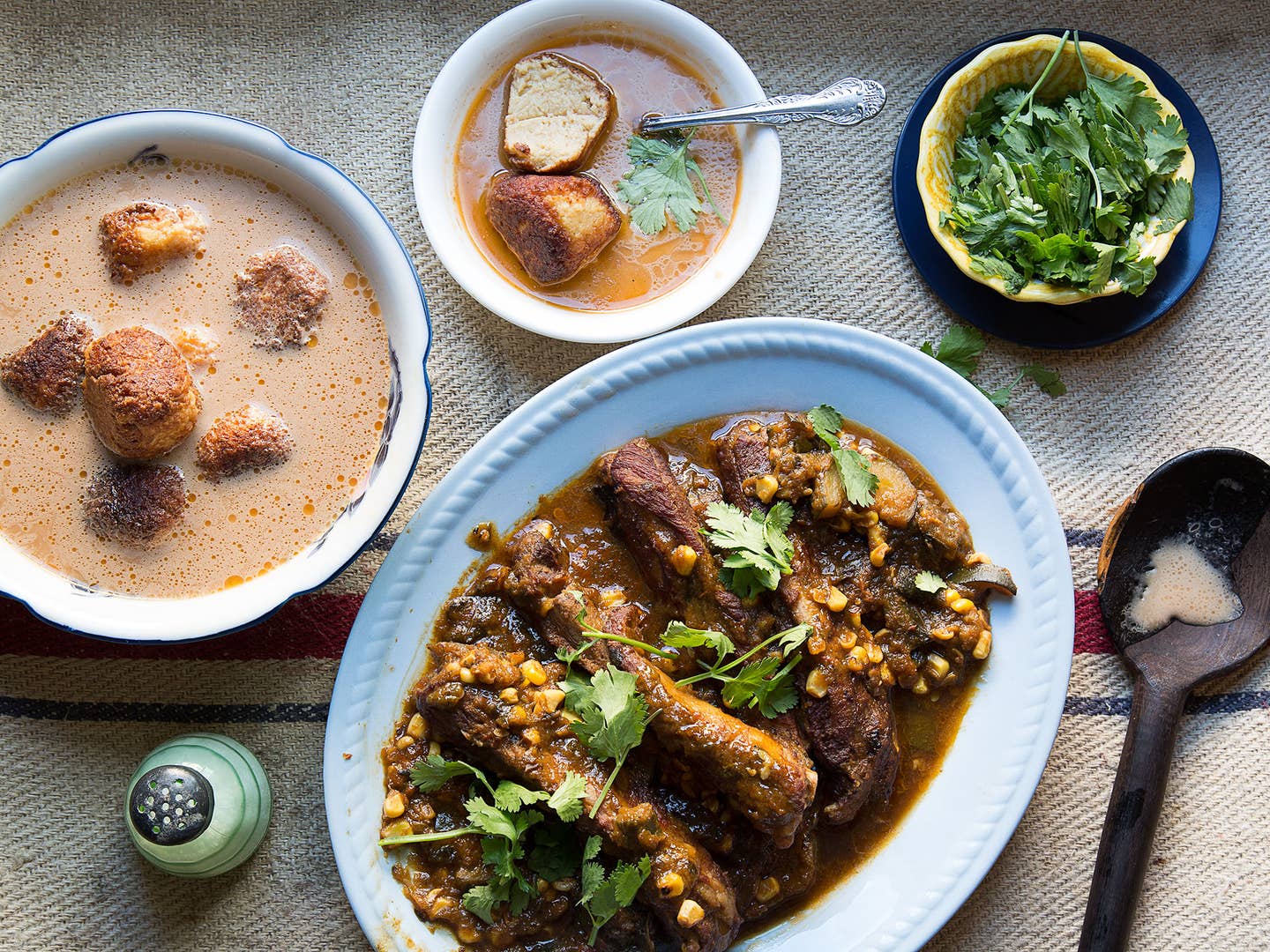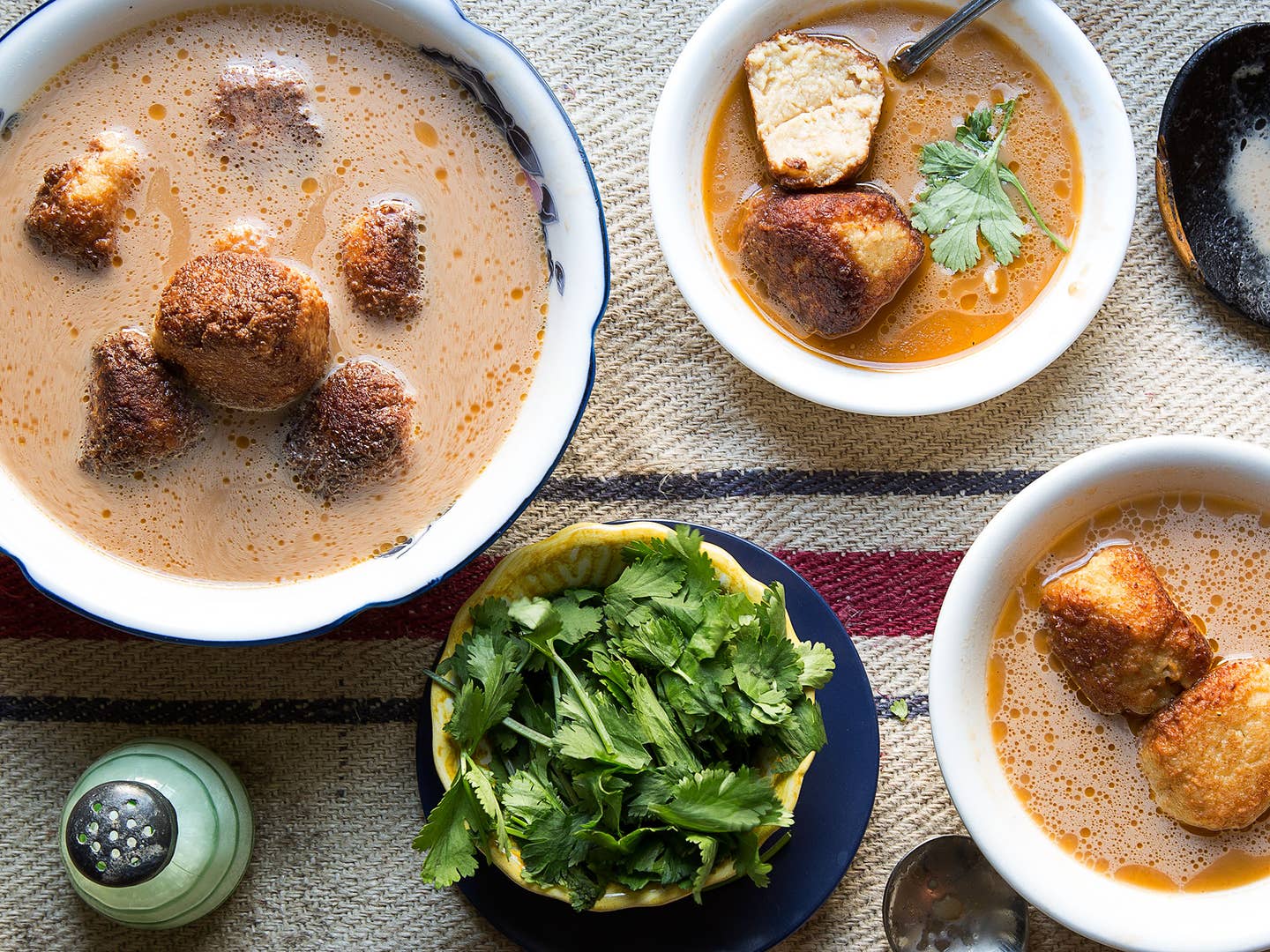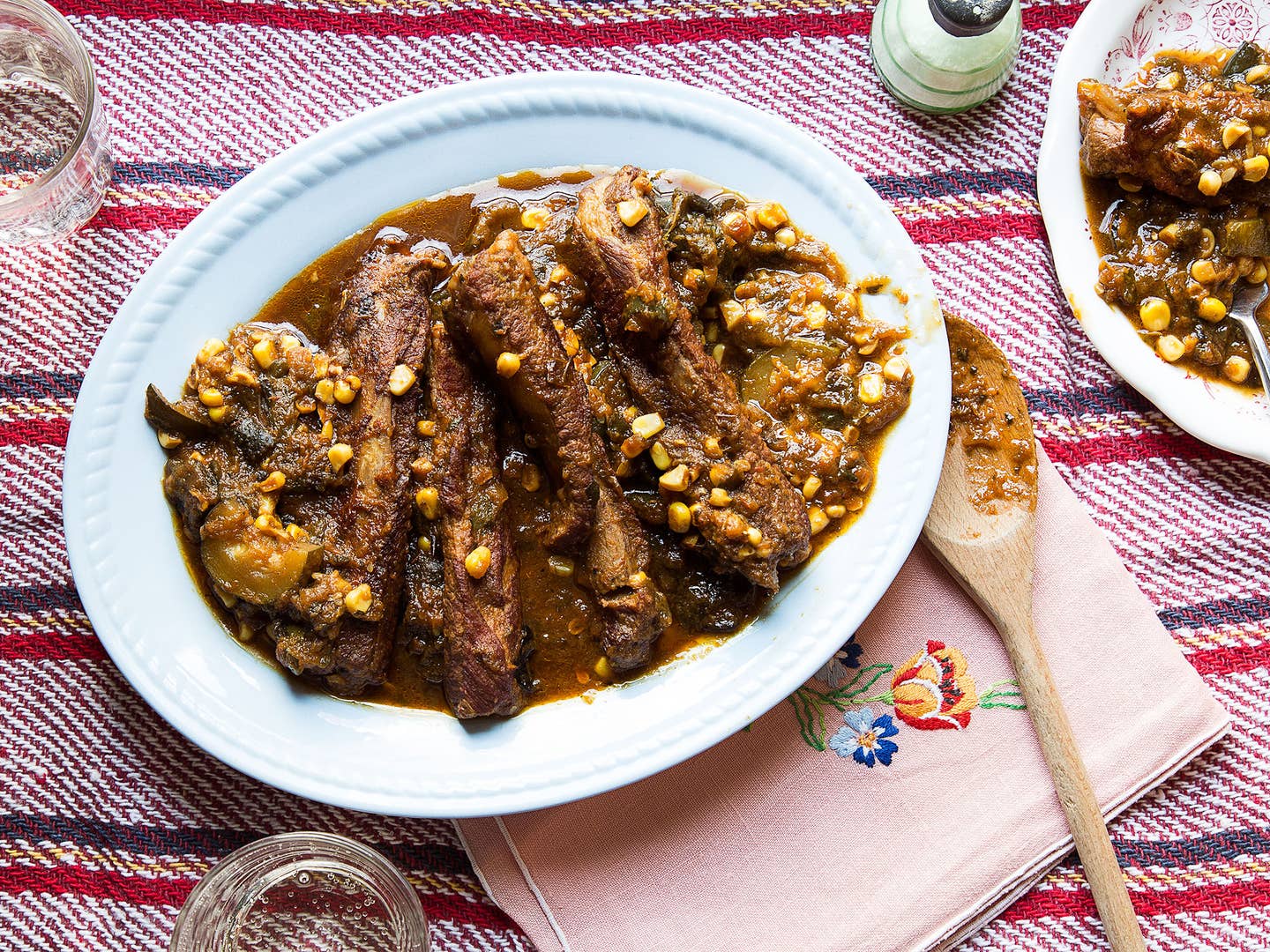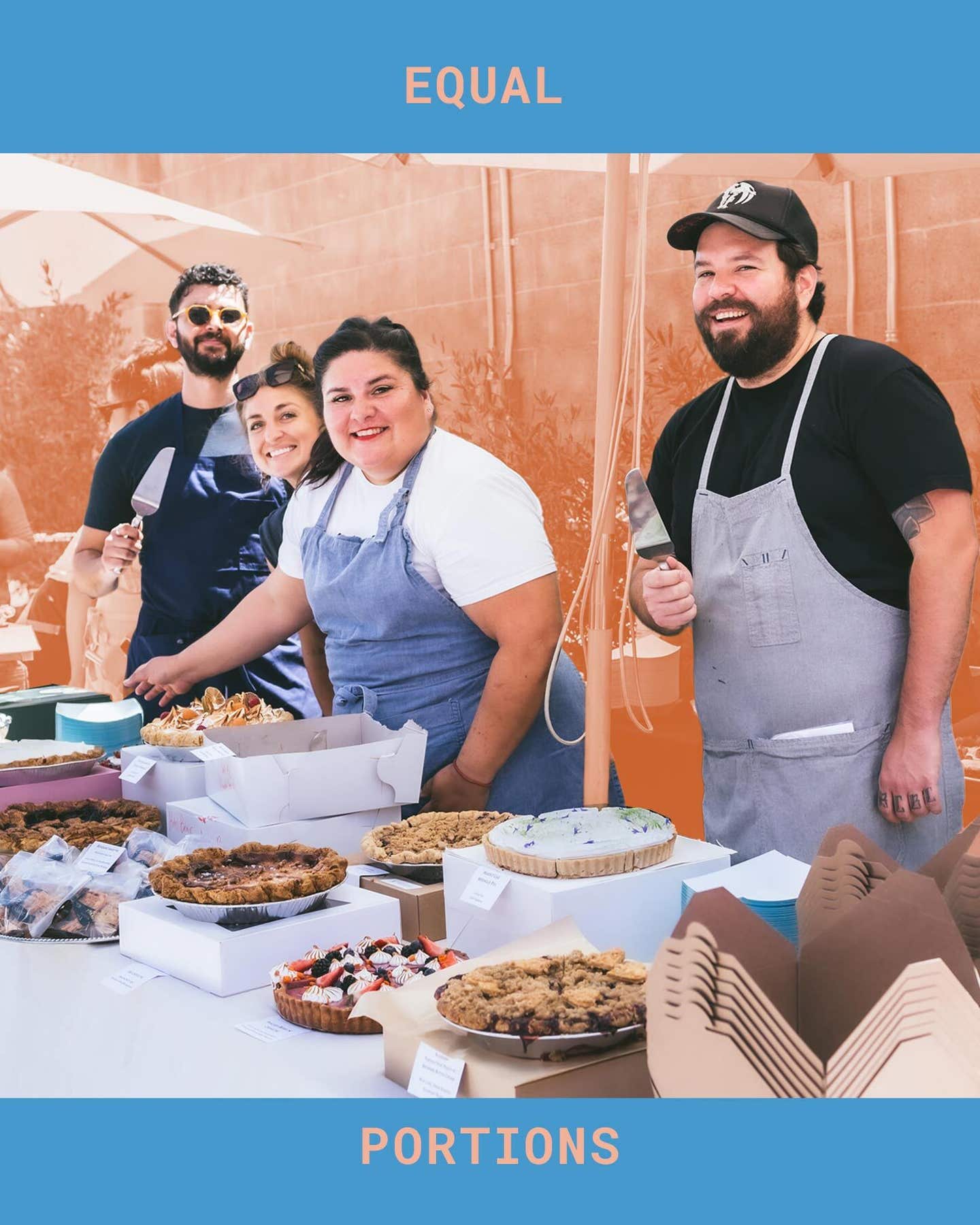
The Forgotten Legacy of Mexico’s Original Celebrity Chef
Before Rick Bayless, before Diana Kennedy, Josefina Velázquez de León was the sage of the Mexican kitchen
It sounds simple to make pot of beans, but when I was writing my Mexican cookbook last year, the options felt overwhelming. How could I coax out that perfect, starchy bean broth that comes from bubbling for hours in a Mexican pot? Should the beans soak overnight or not? What about sautéing them first in garlic or onion? Most importantly, how could I write authoritatively about a dish that's often passed down by Mexican grandmothers and aunts, but wasn't with mine?
When it came time to research, the first place I turned was Josefina. Her real name is Josefina Velázquez de León, and even though she died in 1968, she remains the most important figure in Mexican gastronomy. From the 1930s through 1960s, she wrote and published more than 140 cookbooks (some say closer to 150) on topics ranging from cake decorating, flavorful low-cost meals, regional Mexican classics, and even launching a food business out of one’s home. She ran a successful cooking school in Mexico City, hosted her own TV show, wrote a magazine column, and appeared on the radio. She was the original Mexican celebrity chef, and you could, at one point, find her books in nearly every middle-class home.
But she was also—even if she never identified herself that way—the country’s first culinary anthropologist, documenting for the first time on wide scale what most Mexicans actually ate. No one has matched her output and zeal, or done more to shape Mexican food’s culinary identity. Josefina’s work shows, in some cases, how little the food has changed; other recipes offer a window into cooking techniques and traditions that modernization has all but wiped out. Overall, her books have become a vital link between the past and the present, and required reading for anyone looking to truly understand Mexican cooking.
For me, a first-time cookbook author translating traditional Mexican cuisine into relatable terms, her most important book is her only bilingual work, the Mexican Cook Book Devoted to American Homes published in 1947. Almost 70 years later, the book remains a classic. In a clear, approachable tone, Josefina breaks down iconic recipes such as tomato-infused Mexican rice, refried beans, chilaquiles, and mole poblano. She includes important cooking terms in English and Spanish, and diagrams of Mexican meat cuts.
Some recipes highlight the fantastic things that can be done with old tortillas, of which there are many in Mexican cooking. For her tortilla ball soup, she grinds stale tortillas soaked in milk into a dough. Other recipes spotlight traditions that are still carried out, although much less commonly now, by the skilled cooks in the Mexican countryside. Josefina's recipe for asado al pastor (shepherd's roast), a specialty of Hidalgo state, advises how to build a roasting spit over an open fire: "Fork two green branches, about four feet long, at each side of the burning coals, propping them at the bases with large stones to keep them from slipping." A hot chocolate recipe takes readers through grinding the cacao beans on the metate.
As a Mexican-American woman, there's something else I connect to in this book: The chance to have a trusted source walk me through dishes my family might have made. I have vague memories of my mom and grandmothers making calabacitas, a mix of zucchini, corn, tomatoes, and cheese. My mom has described her recipe to me, but my grandmothers died before I thought to ask either of them how they made it. The Mexican Cook Book, which has a calabacitas recipe, brings me closer to the food memories I wish I would have created for myself, and gives me an opportunity to still try.
For some Mexican-American home cooks in the United States, the book is a bible, says Zarela Martinez, author of three Mexican cookbooks and operator of her own Mexican restaurant, also named Zarela, in New York for more than 20 years.
In fact, Velázquez de León, throughout her nearly 40-year career, would shape what people on both sides of the border thought of as Mexican food. She traveled throughout Mexico and collected home cooks' recipes into books, unifying what was then a disparate collection of locally known dishes. Before Josefina, no Mexican cookbook author had solicited recipes from housewives since Vicenta Torres de Rubio's Manual de la Cocina Michoacana in the 19th century, says Cristina Barros, an author and researcher of traditional Mexican gastronomy. Most early Mexican cookbooks had also been geared toward an elite European-leaning audience, many of whom eschewed using the Mexican staples of beans, corn, and chile.
Josefina’s regional Mexican cookbooks “recognized the knowledge of women,” Barros says.
These regional cookbooks are what first inspired Diana Kennedy to travel around Mexico and document traditional Mexican cooking. She’s since devoted most of her life to the task, publishing eight cookbooks on traditional Mexican foodways.
“I ALWAYS acknowledge the works of Josefina,” Kennedy wrote to me in an email. “She was the first (and only writer until me) to show and tell Americans (mostly) in her series of books and cooking academy that Mexico had diverse regional cuisines.”
Rick Bayless, the prolific Mexican cookbook author and restaurateur, said he used to scavenge Mexico City’s flea markets for Josefina’s books when he lived in Mexico City 35 years ago. He once made a pilgrimage to Josefina’s former home and site of her cooking school, knocking on the door just to see who would answer. (He said he thinks her niece did, and she invited him to peruse a box of old cookbooks in the garage.)
“Her work has served as bedrock for so many cooks’ exploration of Mexican cuisine,” Bayless said in an email. “I only wish someone would sift all those books together into a single volume and reprint them.”
Velázquez de León was born in 1899 to an upper-class family in Aguascalientes, Mexico. They moved to Mexico City in 1905. The tumult of the subsequent Mexican Revolution—and Josefina’s Catholic upbringing—would be key forces in shaping her career, which would emphasize women doing more with less while sustaining the family hearth. Josefina herself married when she was nearly 30. The marriage lasted only 11 months before her husband, 20 years her senior, died.
As a childless widow in Mexico City, Velázquez de León had more opportunities than a married woman, who were still expected to follow their husbands' wishes. She took over her husband's business, then sold his stake and began what would become her eventual Mexican cooking empire, writes Mexican food historian Jeffrey Pilcher in "Apostle of the Enchilada," an essay from his book The Human Tradition in Mexico.
Her cooking school opened in the bottom floor of the family home on Abraham Gonzalez Street in 1933, aiming to teach middle class women and new brides how to set the table, serve food, cook, bake, and prepare dishes for special occasions such as baptisms and communions. Josefina had learned culinary skills from her mother and from teaching herself. The business thrived. Three years later she published her first book, Manual Práctico de Cocina (Practical Cooking Manual); many others followed.
Even by today’s standards, Josefina was an ambitious businesswoman, building her brand around traditional feminine values that she recognized were shifting in a rapidly modernizing Mexico. She sought and received sponsorships for many of her books, urging housewives to use specific brands of pots and pans, blenders, and vegetable peelers. She sold ingredients and cooking utensils in her school. She worked with religious groups to organize trips to various Mexican states, where she’d teach local women cooking classes and ask them to submit their favorite recipes. Then she’d compile the recipes into books published by her own imprint.
In 1947, responding to demand from her students and emboldened by a recent trip she'd taken to the United States, Velázquez de León published the Mexican Cook Book Devoted to American Homes. Unlike other midcentury Mexican cookbooks in English that exoticized Mexican women or painted a romanticized portrait of Mexican life, the Mexican Cook Book took Mexican cooking seriously. It remained in print through at least 1980; today copies sell for around $100 to $750 online.
Even Julia Child knew about the Mexican Cook Book. The largest library in the country devoted to women's history in America, the Schlesinger Library at Harvard's Radcliffe Institute for Advanced Study, carries Child's copy in its archives, along with several other Josefina titles.
Marylène Altieri, the institute's curator of books and printed materials, said she’s grown the collection of Josefina’s work considerably in the past six months, from a few dozen titles to 64. But the largest selection of Josefina’s work, about 130 titles, belongs to the Mexican Cookbook Collection at the University of Texas San Antonio.
An online searchable list of all of her titles doesn’t yet exist. Mexican historians didn’t start examining her legacy until at least the 1980’s, Barros says. In the meantime her books, many of them paperbacks, all of them out of print, have floated around Mexican flea markets or sat in dusty drawers. (I purchased three in 2009 at a flea market in Mexico City, for about $8 each.)
While Josefina published extensively throughout her life, one thing that is not well-documented is her personality, or any emotions she might have felt about her family and choice of career. One of her surviving relatives is Mauricio Velázquez de León, a New York-based publisher whose grandmother was Josefina's cousin. Velázquez de León knew next to nothing about his famous relative growing up. (He wrote an article for Saveur in 2005 detailing his journey to learn more.) From what he could gather in talking to her former students, Velázquez de León says Josefina was reserved, very religious, and fairly grumpy.
“I never heard, ‘Oh, she liked to dance’,” he says. “All I heard was that she worked, worked, worked and worked.”
Those of us who follow her work perhaps may never learn who she really was. But we will still refer to her affectionately by her first name. When I asked Chef Silvana Salcido Esparza of Barrio Café in Phoenix whether she knew Josefina Velázquez de León's work, she sent me a picture of herself holding the Mexican Cook Book. The caption read, "You mean this Josefina? Josefina was a bad-ass."
In my head, Josefina is a confident if occasionally firm voice. When I began writing my bean recipe, it was she who suggested mashing some of the beans into the broth to make it starchier, a technique I hadn’t read anywhere else. As I stood over my second or third pot, I heard her telling me to cook the bean innards until creamy, and be unapologetic in my use of lard to fry them.
Get the recipe for Mexican Tortilla Ball Soup »
Get the recipe for Mexican Braised Spare Ribs with Squash and Corn »
Lesley Téllez is the author of Eat Mexico: Recipes from Mexico City’s Streets, Markets and Fondas (Kyle Books, 2015). She also owns and operates a food tourism company in Mexico City.
Keep Reading
Continue to Next Story












